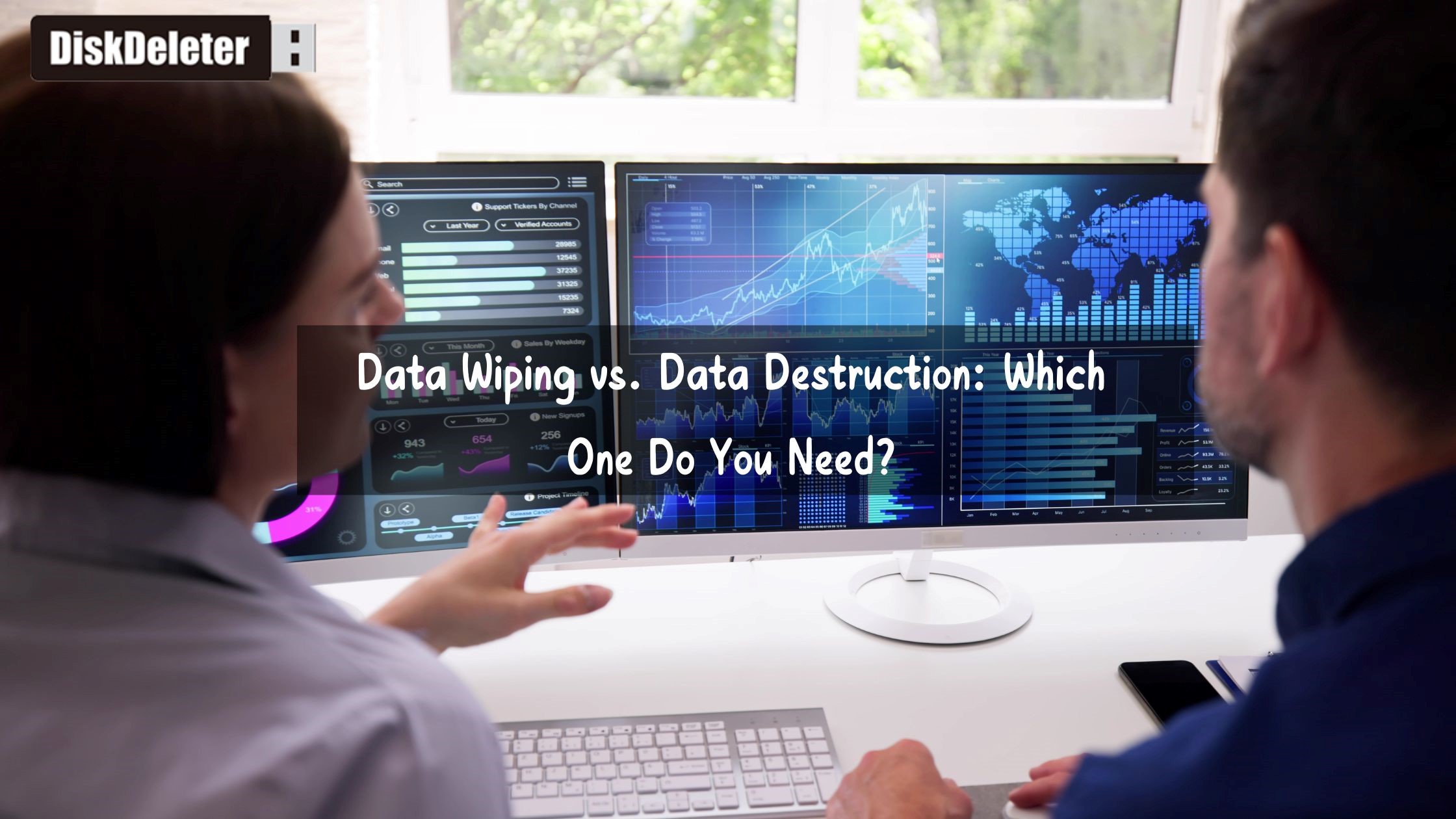
In an era where digital security is paramount, organizations and individuals must ensure that sensitive data is permanently removed before disposing of or repurposing storage devices. However, when it comes to data elimination, two primary methods exist: data wiping and data destruction. While both serve the same fundamental purpose—preventing unauthorized access to information—they differ significantly in execution, efficiency, and usability. Choosing the right method depends on various factors, including compliance requirements, environmental concerns, and the device's intended future use.

Understanding Data Wiping and Data Destruction
What is Data Wiping?
Data wiping, also known as logical sanitization, is a software-based method that overwrites existing data with random sequences of ones and zeroes, ensuring that the original information becomes irretrievable. This method is widely used in corporate IT environments, data centers, and personal computing, where devices are intended for resale, reuse, or donation.
Key Features of Data Wiping:
- Preserves Device Functionality: The hardware remains intact and can be repurposed after wiping.
- Meets Compliance Standards: Adheres to data protection regulations such as GDPR, HIPAA, NIST 800-88, and ISO 27001.
- Multiple Erasure Methods: Supports DoD 5220.22-M, Gutmann method, and cryptographic erasure for enhanced security.
- Cost-Effective: Ideal for organizations managing large-scale IT asset disposition (ITAD) without physical destruction costs.
- Tamper-Proof Certification: Generates verifiable deletion reports for compliance audits.
What is Data Destruction?
Data destruction is a physical method that renders storage devices completely unusable by shredding, incinerating, or degaussing (applying a strong magnetic field to erase data). It is commonly used for highly classified or end-of-life data storage where absolute elimination is necessary.
Key Features of Data Destruction:
- Permanent Data Elimination: Once destroyed, the data is completely irretrievable.
- Irreversible Process: Physically dismantles hardware, preventing device reuse.
- Essential for High-Security Data: Used in government, military, and financial sectors handling top-secret and highly regulated information.
- Eco-Disposal Challenges: Requires proper e-waste management to prevent environmental hazards.
- No Verification of Data Removal: Unlike data wiping, destruction does not provide a digital audit trail for compliance.
Analytical Comparison: Data Wiping vs. Data Destruction
|
Feature |
Data Wiping |
Data Destruction |
|
Data Recovery Risk |
Zero risk after multiple overwrites |
Zero risk (device is destroyed) |
|
Device Reusability |
Yes (hardware remains functional) |
No (device is physically destroyed) |
|
Compliance & Audit |
Generates deletion certificates |
No digital proof, only destruction evidence |
|
Cost |
Cost-effective for IT asset reuse |
Expensive due to destruction logistics |
|
Environmental Impact |
Eco-friendly (no waste generated) |
High impact (e-waste and hazardous materials) |
|
Best for |
Companies reselling or reusing devices |
Classified government and military data |
Industry Insights: Why Choosing the Right Method Matters
According to the IBM Cost of a Data Breach Report 2023, the average data breach costs $4.45 million, making secure data disposal a critical aspect of IT asset management. Additionally, a study by Similar Technology industry found that 42% of second-hand storage devices still contain recoverable data, highlighting the risks of improper data sanitization
.
- Financial Sector: Banks and financial institutions prefer data destruction for handling customer records containing credit card details and financial transactions.
- IT Industry: Companies managing on-premise servers, enterprise storage devices, and data centers opt for data wiping to securely repurpose high-value IT assets while ensuring compliance with data protection regulations."
- Healthcare & Government: Due to HIPAA and classified information policies, physical destruction is often mandated for end-of-life healthcare and defense storage.
Conclusion: Why Data Wiping is the Future of Secure Data Disposal
While data destruction is necessary for extreme security cases, data wiping has emerged as the most sustainable and cost-effective solution for businesses and individuals looking to securely erase data without losing valuable hardware. DiskDeleter provides certified, tamper-proof data erasure solutions with 16 types of wiping methods, ensuring compliance with industry regulations while reducing e-waste.
Whether you’re an enterprise managing IT assets or an individual upgrading to a new device, choosing the right data disposal method is crucial. With DiskDeleter, you can achieve secure, verifiable, and eco-friendly data sanitization, protecting sensitive information while contributing to a more sustainable digital future.
© 2025 Jungle KK - Powered By Knowledge Fortune
